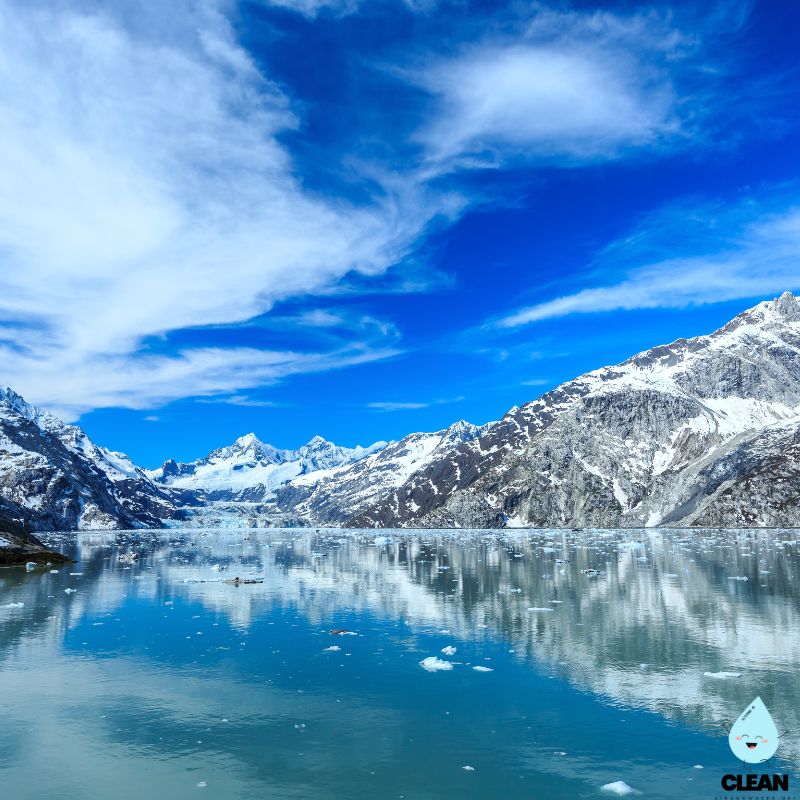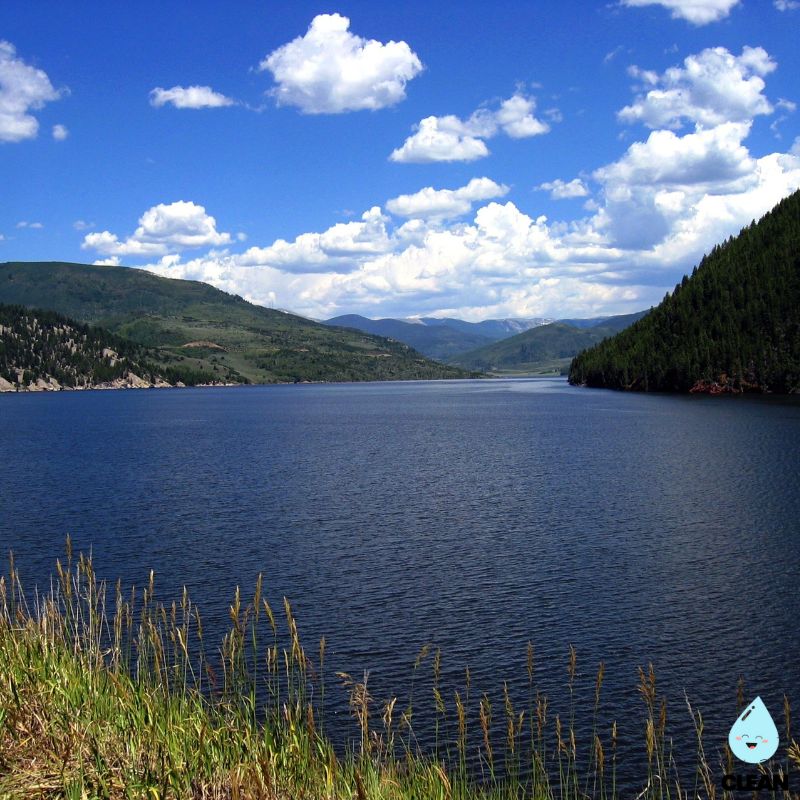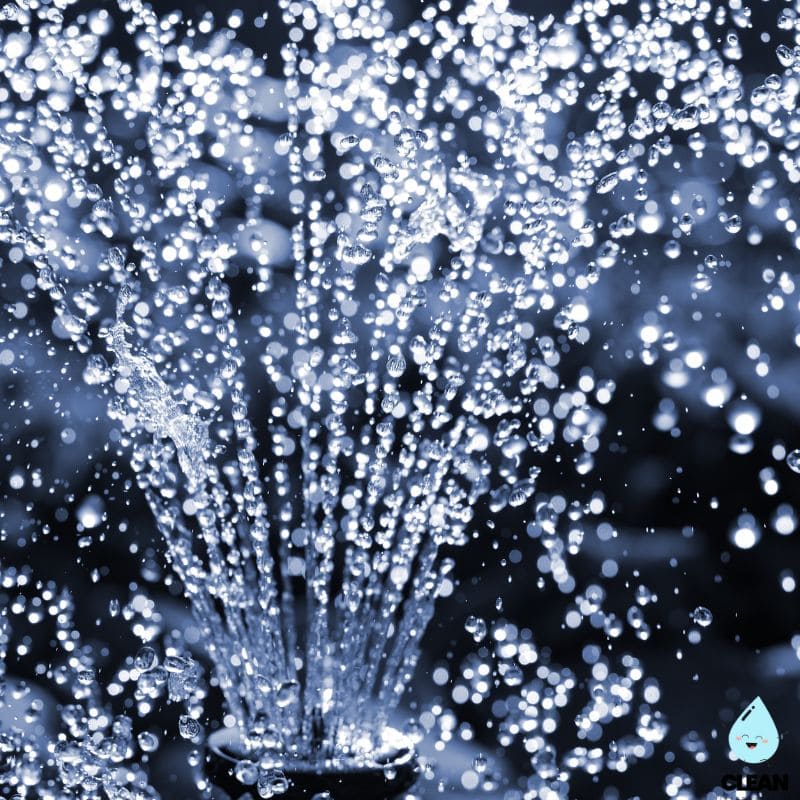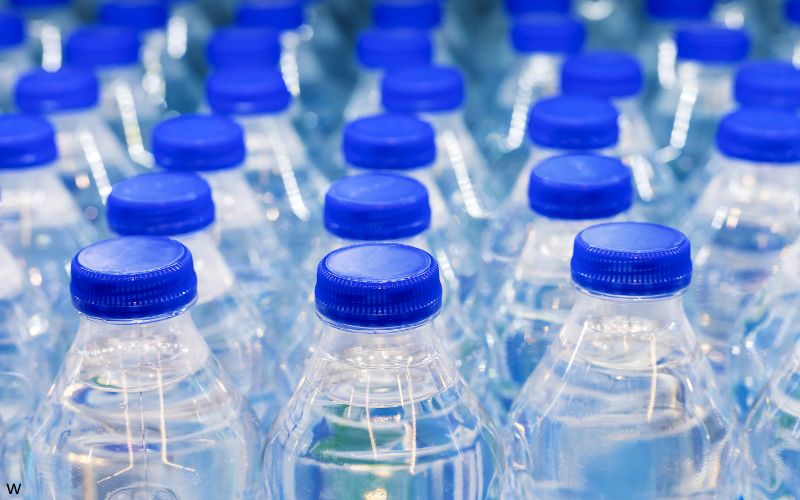Alaska Water Quality at a Glance
PFAS concerns
Is Alaska Water Safe to Drink?
Generally good — Many Alaskan systems use clean mountain or glacial sources like Anchorage’s Eklutna Lake3. The main watch item is PFAS (“forever chemicals”) near some airports and military facilities from past firefighting foam use2. New federal rules set strict PFOS/PFOA limits at 4 parts per trillion1. Rural access remains a challenge in parts of the state4.
❄️ Key Facts for Alaska Residents
- EPA PFAS limit is very low: 4 ppt for PFOS and PFOA — that’s like 4 drops in an Olympic pool1. Why it matters: Even tiny amounts now count.
- Highest local PFAS readings were from site sampling near Gustavus: ~14,600 ng/L at a DOT site and 228 ng/L at the airport — historical sampling (not current tap water)5. Why it matters: Shows where cleanup and monitoring focus.
- PFAS travel in air and snow and have been detected across the Arctic region6. Why it matters: Background PFAS can reach remote places.
- Disinfection byproducts (DBPs) are monitored and reported by utilities like Anchorage AWWU10. Why it matters: They form during treatment and must stay below legal limits.
- Some rural homes still lack running water (about 3,300 households, many in 32 unserved villages)4. Why it matters: Access and infrastructure vary by community.
Read the full report below for detailed analysis, regional data, and actionable recommendations for Alaska residents.
Alaska – The Last Frontier Water – Quality Report 2025: PFAS Testing, Infrastructure Concerns & Safety across your state
Alaska’s public water systems range from large urban utilities to small rural systems. Many draw from clean lakes, rivers, or aquifers. Anchorage’s main source is Eklutna Lake, a high-quality mountain reservoir3. The biggest statewide watch item is PFAS from historic firefighting foam use at airports and military facilities2. New EPA drinking water standards now set very low limits for PFOS and PFOA (4 ppt)1. Rural access remains uneven, with thousands of homes lacking in-home water service4. Infrastructure investments are ongoing as the state improves systems under challenging Arctic conditions7.

Alaska Water Quality: Current Status (2024-2025)
Statewide Compliance and Testing
- Most systems meet federal standards under the Safe Drinking Water Act. Utilities monitor for regulated contaminants and publish yearly Consumer Confidence Reports3.
- PFAS is the key emerging issue near some airports and military sites because of historic firefighting foam (AFFF) use2. EPA now sets enforceable PFOS/PFOA limits at 4 ppt1.
- Rural access varies. Some homes still rely on hauled water; work continues to expand safe in-home service in unserved villages4.
Urban vs. Rural Differences
- Urban systems (like Anchorage) have strong source water and modern treatment3.
- Remote communities face harsh weather, high costs, and staffing challenges to run systems year-round4.
- Climate stress (permafrost thaw, erosion) can damage pipes and storage, raising maintenance needs7.
PFAS Contamination Response
- Where found: Multiple communities report PFAS linked to airports/military bases2.
- Immediate steps: State agencies have provided alternate water sources and connections where possible in affected areas2.
- Regulatory timeline: Systems must plan for the new EPA PFAS rule; federal compliance requirements are now in place1.
Arctic and Remote Community Challenges
- Extreme cold: Systems need freeze-protection and circulation to operate safely in very low temperatures.
- Logistics: Distance and weather make it harder to bring in materials and keep certified operators on site4.
- Public health: Lack of in-home water in some areas raises illness risk; closing these gaps remains a priority4.
Looking Forward: 2025–2030
Alaska continues to invest in reliable drinking water across a huge, harsh landscape. The state and federal partners are funding upgrades, PFAS response, and resilient designs for permafrost and coastal change7. For families, the bottom line is simple: your utility report is the best snapshot for your neighborhood, and an at-home filter can add peace of mind if you live near a PFAS site.
Recommendations for Alaska Residents

Check Your Local Report
Read your utility’s Consumer Confidence Report for the latest numbers (Anchorage AWWU posts current reports online)3. Private wells near airports or military facilities may consider PFAS testing through approved labs.

Support Rural Upgrades
Safe in-home water is still missing in some communities. State and federal programs are working to close these gaps; staying informed and engaged helps move projects forward4.

Consider Certified Filtration
If you live near a known PFAS site or want extra protection, look for NSF-certified carbon or reverse osmosis filters specifically tested for PFAS reduction. We may earn a commission if you buy through our links. This never affects the information we present.

Report Water Concerns
For taste, odor, or color issues, contact your local utility. Suspected contamination near airports/military sites can be reported to Alaska DEC programs listed on the state website2.

Prepare for Extreme Cold
Insulate and protect lines where needed. During severe cold snaps, some homes run water briefly to prevent freezing. Keep emergency water on hand in case of outages.
Alaska Cities We Cover
Anchorage Water Quality
Anchorage Water & Wastewater Utility draws mainly from Eklutna Lake and reports results each year. Check the latest CCR for DBPs and other regulated contaminants3.
What This Means
Your water generally meets legal standards. Some newer contaminants like PFAS can show up in testing near historic firefighting-foam sites. The EPA’s new rule sets very low limits (PFOS/PFOA at 4 parts per trillion)1. If you live near a known site or want extra peace of mind, a certified home filter is a reasonable added layer — especially for kids and during pregnancy.
We aim to stay current, but figures can change — always check the latest official reports for your address.
Sources & Notes
- EPA — Final PFAS National Primary Drinking Water Regulation (PFOS/PFOA MCL = 4 ppt, 2024). Rule overview (PDF)
- Alaska DOT&PF — PFAS information & community response for airport/military sites. Program page
- Anchorage Water & Wastewater Utility — Drinking Water Quality (Eklutna Lake source; CCRs; testing volume). Water Quality | CCR reports
- Alaska DEC — Water & Sewer Challenge: ~3,300 rural homes without in-home service; 32 unserved villages. Program page
- Gustavus PFAS study (2022): site samples ~14,600 ng/L (DOT) and 228 ng/L (airport) — historical sampling, not tap. Open-access paper
- PFAS detected in Arctic surface snow/precipitation (2024, Environmental Science & Technology). Journal page
- ASCE — Alaska Infrastructure Report Card (2025): drinking water overview & challenges. State summary
- Alaska DEC — Drinking Water Watch database for public water systems. DWW portal
-
- Notes: Removed the blanket claim of “zero lead service lines statewide” because it cannot be verified across every system; utilities test at taps under EPA rules instead.
Please read – our information
The information presented on cleanairandwater.net is compiled from official water quality reports, trusted news sources, government websites, and public health resources. While we strive for accuracy and thoroughness in our presentations, we are not scientists, engineers, or qualified water quality professionals.
Our mission is to present water quality information in an accessible, real-world format that helps people understand what’s in their water and make informed decisions about their health and safety. We believe that complex environmental information should be available to everyone in a format that’s easy to understand.
We make every effort to ensure our content is current and accurate, but we cannot guarantee that all information is complete or error-free. This website should not replace official communications from your local water utility or health department. We always recommend consulting official sources for the most up-to-date information regarding your specific water system.
Clean Air and Water is not liable for any unintentional errors, omissions, or outdated information. The content on this site is provided for informational purposes only and should not be considered professional advice.

